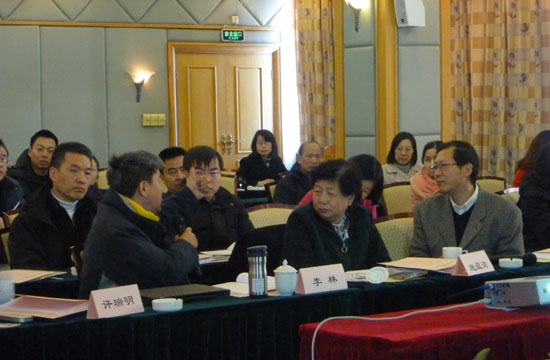State Key Science Research Program Project “Molecular Mechanism and Structural Basis for Epigenetic Regulation during Stem Cell Programming and Reprogrammming”Launched
Source:
Time: 2011-01-26
From January 14th to 15th,2011, the Conference for the Launch of the State Key Science Research Program Project “Molecular Mechanism and Structural Basis for Epigenetic Regulation during Stem Cell Programming and Reprogrammming”took place in Lijiang, Yunnan Province. Among the participants are project chief scientist Dr. DING Jianping (director’s assistant, Shanghai Institute of Biochemistry and Cell Biology, Shanghai Institutes for Biological Sciences, Chinese Academy of Sciences), Prof.SHI Yunyu (CAS Member, dean of School of Life Sciences, University of Science and Technology of China, CAS), Dr. XU Ruiming (deputy director, Institute of Biophysics, CAS), Prof. TANG Qiqun (Fudan University), Prof. KANG Jiuhong (Tongji University), Dr. LI Lin (vice-president, SIBS,CAS), Dr. JIANG Ge (director, Department of Scientific Management, SIBCB,SIBS,CAS), chief scientists of the four sub-projects, and core research team members. The Conference was presided by Prof. SHI Yunyu. After a brief project overview given by Dr. DING, the sub-project chief scientists and core research team members gave talks about the background and future research plans of the four sub-projects, which was followed by a discussion session.
This Project focuses on the key scientific questions about the epigenetic regulation during stem cell programming and re-programming, and plans to carry out research on the following four directions: 1) Establishment and maintenance of the epigenetic code, 2) recognition and translation of the epigenetic code, 3) the dynamics and regulation mechanism of chromatin’s higher order structure, 4) the regulation mechanism of non-coding RNA. The major participating institutions of this Project include Shanghai Institute of Biochemistry and Cell Biology (SIBS,CAS),University of Science and Technology of China (CAS), Institute of Biophysics (CAS), Fudan University, Peking University, and Shanghai Institute of Organic Chemistry (CAS).


 Appendix:
Appendix: